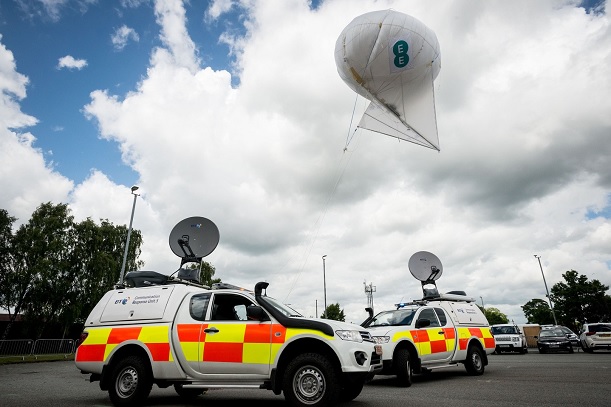EE has used millimetre wave backhaul to connect one of its air-masts, which the mobile operator hopes to use to connect areas in emergency situations.
The BT-owned company’s patent-pending Helikite solution, first trialled in February, contains a small cell from Parallel Wireless. Yesterday’s (12 June) trial involved technology from mmwave specialists PHAZR and a virtualised evolved packet core from Athonet to backhaul across the 26GHz band.
EE said the demonstration helped show potential applications and benefits of the technology with the backhaul boosting the potential number of customers who could connect to the balloon at higher internet speeds.
[Read more: 5G clarity is catalyst for small cell investment, says BT network head]
Marc Allera, EE CEO, said: “Innovation is what drives advances in technology, and it’s what keeps making UK consumers’ experience of mobile better and better.
The EE network will go from strength to strength thanks to BT’s incredible R&D capabilities and our commitment to delivering what our customers need.
“Today’s demonstration is a great example of that: we know that we need better solutions to keep customers connected in the most rural parts of the UK and during disasters, and we can make that solution even more powerful by developing ground breaking pre-standard 5G technology.
“This is not 5G, but it is a technology that’s an important stepping stone to 5G. We’re working hard to adopt the principles and the technologies that will become 5G, and to showcase what benefits these can bring to our customers.”
EE and BT Labs are also researching other kinds of technology that have been pegged as central to 5G, including Massive MIMO and network slicing. It is carrying out research into the latter with Huawei.
Last year, BT announced it was working with Nokia on researching a range of use cases and technology.



